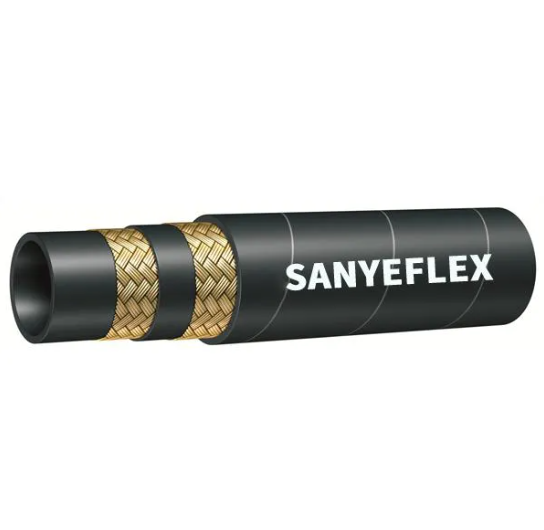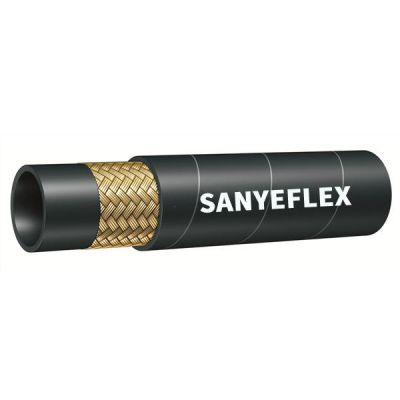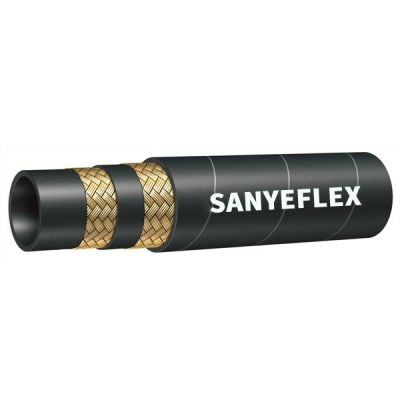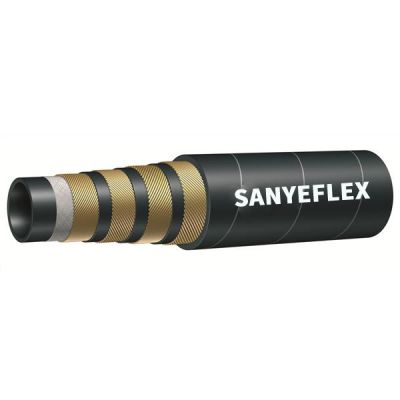Jun. 16, 2025
In today’s high-demand industrial landscape, hydraulic systems are the backbone of machinery used across construction, agriculture, mining, manufacturing, and marine industries. At the heart of these systems lies a critical but often overlooked component: the hydraulic hose.
But what exactly is a hydraulic hose, and why is it so essential in industrial equipment? In this article, we’ll explore the structure, function, types, and importance of hydraulic hoses, especially from the perspective of B2B procurement. Whether you're an OEM, maintenance provider, or bulk buyer, understanding the role of hydraulic hoses can help you make smarter, safer, and more cost-effective decisions.

A hydraulic hose is a flexible, reinforced rubber or thermoplastic tube designed to carry hydraulic fluids between components in a hydraulic system. These fluids can include oil, water, or synthetic liquids, and are typically pressurized to transfer force or motion.
Hydraulic hoses serve as a conduit for fluid power, enabling the movement of pistons, the rotation of motors, or the lifting of heavy loads. Unlike rigid pipes, hoses can bend and flex, making them ideal for use in tight or mobile areas of machinery.
A high-quality hydraulic hose consists of three main layers:
Inner Tube: Made of synthetic rubber or thermoplastic, this layer is designed to be compatible with the fluid it carries.
Reinforcement Layer: This is the strength layer and typically includes high-tensile steel wire (either braided or spiral-wrapped) or textile braiding. It determines the hose’s pressure rating.
Outer Cover: The protective layer shields the hose from external damage such as abrasion, weather, oil, and chemicals.
Each layer contributes to the hose’s durability, flexibility, and performance under harsh conditions.
A hydraulic system relies on a closed-loop of pressurized fluid to function. The hose is a vital component of that loop. If the hose fails, the entire system fails—leading to downtime, repair costs, and potential safety hazards.
Hydraulic hoses allow designers to build more compact and versatile machines, as they can route fluid through flexible paths. This is particularly valuable in mobile equipment like excavators, cranes, and agricultural machinery.
A well-manufactured hydraulic hose prevents leaks, bursts, and fitting failures. In high-pressure systems, even a small failure can result in serious injury or costly machine damage. That’s why high-quality, properly rated hoses are a non-negotiable safety feature.
While a cheap hose may seem economical in the short run, frequent replacements and machine failures can add up. Investing in reliable hoses from trusted manufacturers saves time, money, and hassle over the lifecycle of your equipment.
Hydraulic hoses come in a wide range of configurations depending on pressure, temperature, and application. Some common types include:
SAE 100R1/R2: For medium pressure applications; single or double steel wire braided.
SAE 100R12/R13: For high-pressure systems; spiral-wound wire reinforcement.
SAE 100R15: Designed for ultra-high pressure applications.
Thermoplastic Hoses: Lightweight and resistant to chemicals; ideal for certain specialty uses.
Textile-Reinforced Hoses: Used in lower-pressure applications like return lines.
Choosing the right hose depends on working pressure, temperature range, fluid type, and environmental conditions.
If you’re a B2B buyer or equipment manufacturer, selecting the right hydraulic hose can be a strategic procurement decision. Here are key factors to consider:
Always choose hoses that meet or exceed the maximum system pressure. Under-rated hoses are prone to bursting and pose serious safety risks.
Check both the internal fluid temperature and the external ambient temperature. Quality hoses like those from Sanyeflex can handle extreme heat or cold depending on the material.
Ensure the inner tube is compatible with the hydraulic fluid in use (e.g., mineral oil, glycol, phosphate esters). Chemical incompatibility will degrade the hose prematurely.
In tight machinery layouts, bend radius is a critical factor. A more flexible hose reduces installation complexity and prolongs lifespan.
For outdoor or corrosive environments, UV-, abrasion-, and ozone-resistant outer covers are essential.
As a professional manufacturer and global supplier, Sanyeflex provides premium hydraulic hoses that meet ISO, SAE, and DIN standards. With over 20 years of experience, our hoses are used in construction, mining, agriculture, transportation, and marine applications worldwide.
Reliable Pressure Performance: Up to 6000 psi for heavy-duty applications
Flexible Customization: We offer OEM & ODM support for different industry needs
Fast Global Delivery: Exporting to 80+ countries with short lead times
Certified Quality: ISO9001, CE, and MSHA certifications
Durable Materials: Synthetic rubber, steel wire, and thermoplastic with enhanced wear resistance
Whether you're a machinery builder in Germany or a parts distributor in the Middle East, Sanyeflex provides dependable supply and technical support to ensure your equipment runs smoothly.
Sanyeflex hydraulic hoses are widely used in:
Excavators, Bulldozers, and Loaders
Hydraulic Lifting Systems & Scissor Lifts
Oil & Gas Drilling Rigs
Forestry and Agricultural Harvesters
Ship Deck Equipment and Marine Hydraulics
Our customers report longer service life, fewer breakdowns, and improved system performance after switching to our hose solutions.
In B2B industrial procurement, every component affects the bottom line. Hydraulic hoses may be a “hidden” part of your machinery, but they carry the pressure—literally and figuratively. Understanding their role, choosing the right type, and partnering with a trusted manufacturer like Sanyeflex is a smart move toward equipment reliability, operator safety, and operational efficiency.
Previous: How Flexible Hydraulic Hoses Reduce Vibration in Hydraulic Systems
Next: What’s Inside a Flexible Hydraulic Hose – and Why Should You Care?
Our Customer
Tel.: +86 400 0318 111
Email: admin@sanyeflex.com
Add.: #218 Zhongke Street, High-tech Zone, Hengshui City, Hebei Province, China


